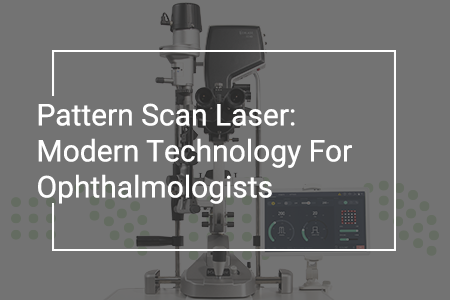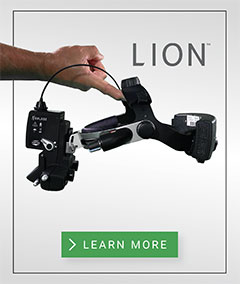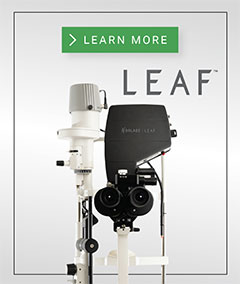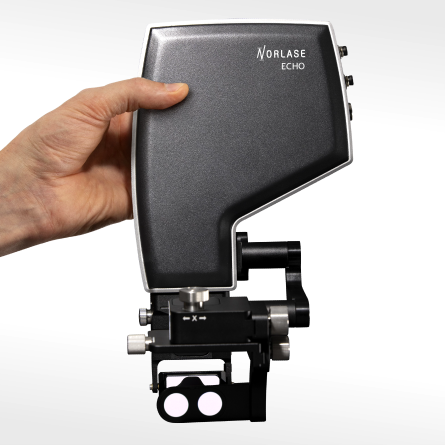What Is A Pattern Scanning Laser?
A pattern scanning laser (PSL) is a laser photocoagulator that delivers predefined patterns instead of a single spot. It is used to treat retina and glaucoma disease of the human eye. A pattern scanning laser, like the Norlase ECHO provides a comparable alternative to the original PASCAL® Laser technology. It delivers laser energy in a preselected pattern that speeds up the treatment time and can make it more comfortable for the patient.
What conditions are treated with the pattern scanning laser?
Retina and glaucoma disease can be treated via a process called laser photocoagulation, wherein ocular tissue is heated to stabilize or prevent further damage caused by the disease. Diseases treated in this way include diabetic retinopathy, diabetic macular edema, retinal occlusions, retinal tears, age-related macular degeneration (AMD) and certain types of glaucoma.
Pattern scan laser treatment: how it is performed and the technology behind it
How does the pattern scanning laser (PSL) work?
Pattern scanning laser photocoagulation is performed by an ophthalmologist that has determined laser treatment is necessary to stabilize or improve the condition of the patient. Numbing drops are applied to the eye and then the patient will be seated at a slit lamp to allow a magnified and illuminated view of the treatment area. The ophthalmologist will place a lens on the eye to allow a magnified view and treatment will commence. The ophthalmologist uses the laser to selectively heat tissue in the patient’s eye to prevent or stabilize the disease progression. Retinal tissue, for instance, can be treated to stop retinal bleeding, prevent the formation of abnormal blood vessels (proliferative diabetic retinopathy), improve fluid transport (diabetic macular edema) or seal holes and tears. In glaucoma treatment, heating tissue in a patient’s trabecular meshwork can stimulate drainage and help lower intraocular pressure. A pattern laser can help speed up the laser treatment, which can make it more comfortable for the patient.
Parameter Settings and More
Pulse Duration
Pattern scanning laser technology involves high speed scanning mechanisms that can move a single laser beam so fast that it can deliver 25 individual spots in approximately half a second. This is at least 10 times faster than performing the treatment with a single spot laser. This makes the application process more efficient and helps shorten patient treatment times.
Treatment Duration & Comfort
Some laser procedures are broken into multiple treatment sessions to make it more tolerable for the patient. Using a pattern laser, however, can allow these treatments to be completed in one session, depending on the patient’s needs and physician’s preferred approach.
Precision
Modern laser systems also include the ability to treat at a photo-thermal stimulation (subvisible or subthreshold) level through the use of extremely short laser pulses. This tissue-sparing laser modality applies just enough energy to therapeutically affect targeted tissue without being visibly damaged.
Side-Effects: Pain, Tissue Damage and Inflammation
Side effects following treatment vary based on the procedure performed, but might include blurred vision, mild-to-moderate pain and inflammation, and other effects local to the patient’s eye(s). Post-operative effects usually resolve within several weeks. Post-treatment care instructions are usually provided by your ophthalmologist.
What are some of the current options available on the market today?
Current pattern scanning lasers available on the market today include the ECHO (Norlase), PASCAL (IRIDEX), Integre (Ellex), Array (Lumenis), and Easyret (Quantel Medical).
Pattern scanning vs. single spot laser photocoagulation
Single spot and pattern laser photocoagulators are equally effective in the treatment of ocular disease. However, pattern laser technology allows the treatment to be more efficient and can shorten the actual treatment time of the procedure. Some single spot laser procedures are traditionally done over multiple treatment sessions spanning several weeks. The multi-spot capability of a pattern laser may allow only one treatment session, resulting in improved convenience for the patient and greater efficiency for the doctor.
Studies have also shown that pattern laser treatment is less painful than traditional single spot laser treatment in Pan Retinal Photocoagulation (PRP).
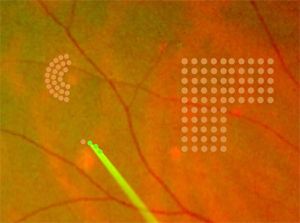 Image of Norlase ECHO grid and arc patterns on the fundus.
Image of Norlase ECHO grid and arc patterns on the fundus.
Norlase ECHO
The Norlase ECHO is a next-generation pattern scanning laser. It combines the ultra-compact, green diode-based Norlase laser with industry-first Micro-Electro-Mechanical System (MEMS) scanning technology. MEMS provides the miniaturization needed to make a pattern scanning laser highly portable. Additional features include speech recognition capabilities and MicroSec mode,which is similar to micropulse laser therapy and enables tissue-sparing photo-thermal stimulation laser treatment.
ECHO is capable of fitting in the palm of a user’s hand, attaches to any slit lamp, and includes voice-activated functionality for hands-free parameter adjustment. A first of its kind, ECHO makes a full range of pattern laser treatments accessible at any time in any practice location.
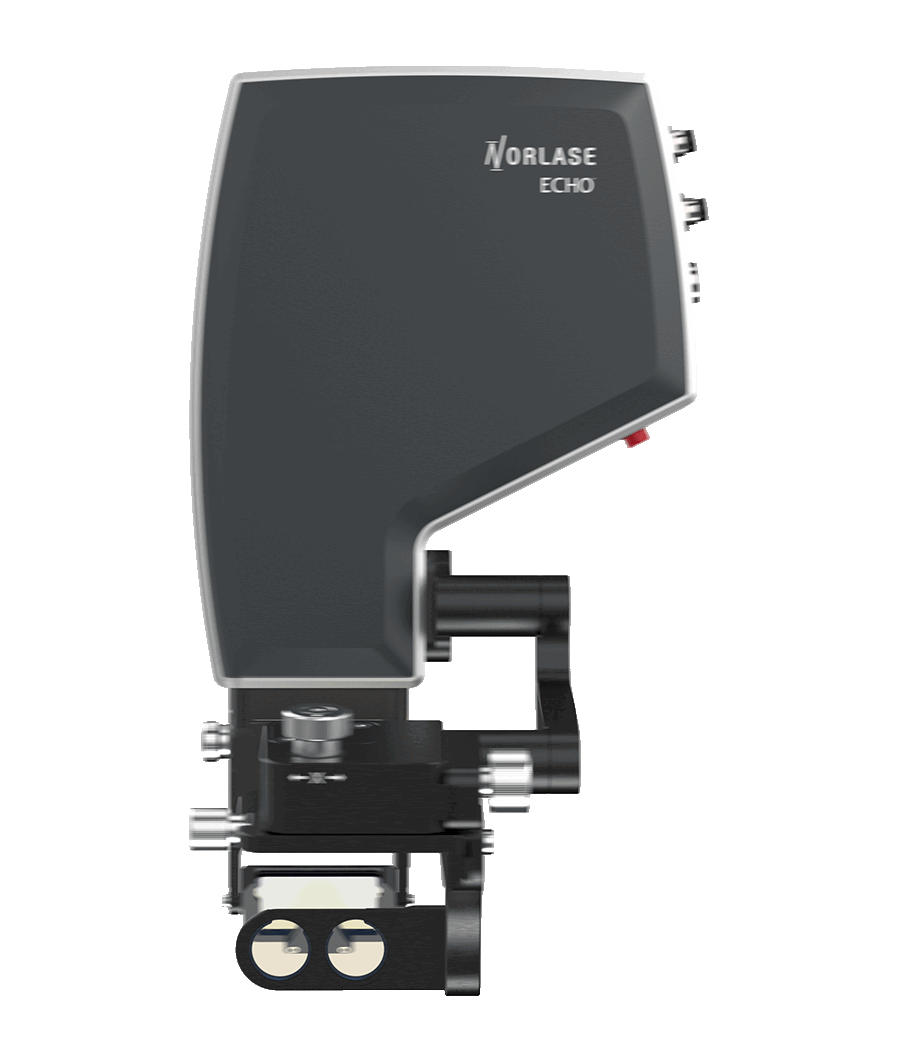
Conclusion
Pattern scanning laser provides ophthalmologists a versatile range of treatment options for managing retinal disease and glaucoma. With the launch of the ECHO by ophthalmic laser manufacturer Norlase, pattern scanning laser has never been more accessible, allowing treating physicians to deliver laser therapy anytime and anywhere.
What Is A Pattern Scanning Laser?
A pattern scanning laser (PSL) is a laser photocoagulator that delivers predefined patterns instead of a single spot. It is used to treat retina and glaucoma disease of the human eye. A pattern scanning laser, like the Norlase ECHO provides a comparable alternative to the original PASCAL® Laser technology. It delivers laser energy in a preselected pattern that speeds up the treatment time and can make it more comfortable for the patient.
What conditions are treated with the pattern scanning laser?
Retina and glaucoma disease can be treated via a process called laser photocoagulation, wherein ocular tissue is heated to stabilize or prevent further damage caused by the disease. Diseases treated in this way include diabetic retinopathy, diabetic macular edema, retinal occlusions, retinal tears, age-related macular degeneration (AMD) and certain types of glaucoma.
Pattern scan laser treatment: how it is performed and the technology behind it
How does the pattern scanning laser (PSL) work?
Pattern scanning laser photocoagulation is performed by an ophthalmologist that has determined laser treatment is necessary to stabilize or improve the condition of the patient. Numbing drops are applied to the eye and then the patient will be seated at a slit lamp to allow a magnified and illuminated view of the treatment area. The ophthalmologist will place a lens on the eye to allow a magnified view and treatment will commence. The ophthalmologist uses the laser to selectively heat tissue in the patient’s eye to prevent or stabilize the disease progression. Retinal tissue, for instance, can be treated to stop retinal bleeding, prevent the formation of abnormal blood vessels (proliferative diabetic retinopathy), improve fluid transport (diabetic macular edema) or seal holes and tears. In glaucoma treatment, heating tissue in a patient’s trabecular meshwork can stimulate drainage and help lower intraocular pressure. A pattern laser can help speed up the laser treatment, which can make it more comfortable for the patient.
Parameter Settings and More
Pulse Duration
Pattern scanning laser technology involves high speed scanning mechanisms that can move a single laser beam so fast that it can deliver 25 individual spots in approximately half a second. This is at least 10 times faster than performing the treatment with a single spot laser. This makes the application process more efficient and helps shorten patient treatment times.
Treatment Duration & Comfort
Some laser procedures are broken into multiple treatment sessions to make it more tolerable for the patient. Using a pattern laser, however, can allow these treatments to be completed in one session, depending on the patient’s needs and physician’s preferred approach.
Precision
Modern laser systems also include the ability to treat at a photo-thermal stimulation (subvisible or subthreshold) level through the use of extremely short laser pulses. This tissue-sparing laser modality applies just enough energy to therapeutically affect targeted tissue without being visibly damaged.
Side-Effects: Pain, Tissue Damage and Inflammation
Side effects following treatment vary based on the procedure performed, but might include blurred vision, mild-to-moderate pain and inflammation, and other effects local to the patient’s eye(s). Post-operative effects usually resolve within several weeks. Post-treatment care instructions are usually provided by your ophthalmologist.
What are some of the current options available on the market today?
Current pattern scanning lasers available on the market today include the ECHO (Norlase), PASCAL (IRIDEX), Integre (Ellex), Array (Lumenis), and Easyret (Quantel Medical).
Pattern scanning vs. single spot laser photocoagulation
Single spot and pattern laser photocoagulators are equally effective in the treatment of ocular disease. However, pattern laser technology allows the treatment to be more efficient and can shorten the actual treatment time of the procedure. Some single spot laser procedures are traditionally done over multiple treatment sessions spanning several weeks. The multi-spot capability of a pattern laser may allow only one treatment session, resulting in improved convenience for the patient and greater efficiency for the doctor.
Studies have also shown that pattern laser treatment is less painful than traditional single spot laser treatment in Pan Retinal Photocoagulation (PRP).
 Image of Norlase ECHO grid and arc patterns on the fundus.
Image of Norlase ECHO grid and arc patterns on the fundus.
Norlase ECHO
The Norlase ECHO is a next-generation pattern scanning laser. It combines the ultra-compact, green diode-based Norlase laser with industry-first Micro-Electro-Mechanical System (MEMS) scanning technology. MEMS provides the miniaturization needed to make a pattern scanning laser highly portable. Additional features include speech recognition capabilities and MicroSec mode,which is similar to micropulse laser therapy and enables tissue-sparing photo-thermal stimulation laser treatment.
ECHO is capable of fitting in the palm of a user’s hand, attaches to any slit lamp, and includes voice-activated functionality for hands-free parameter adjustment. A first of its kind, ECHO makes a full range of pattern laser treatments accessible at any time in any practice location.

Conclusion
Pattern scanning laser provides ophthalmologists a versatile range of treatment options for managing retinal disease and glaucoma. With the launch of the ECHO by ophthalmic laser manufacturer Norlase, pattern scanning laser has never been more accessible, allowing treating physicians to deliver laser therapy anytime and anywhere.
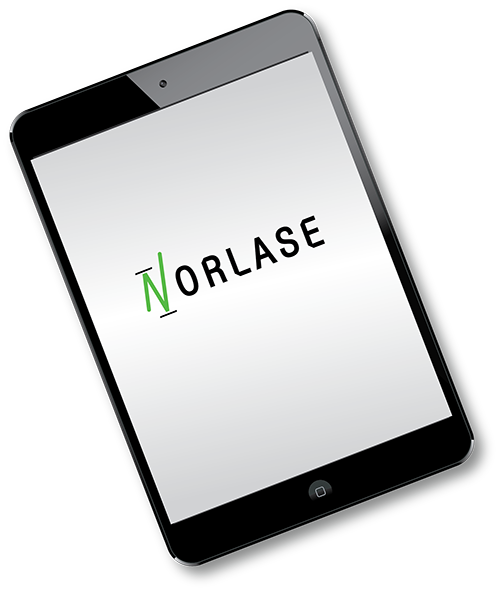
DIDN’T FIND WHAT YOU’RE LOOKING FOR?
Let us know how we can help!
DIDN’T FIND WHAT YOU
WERE LOOKING FOR?
Let us know how we can help!
